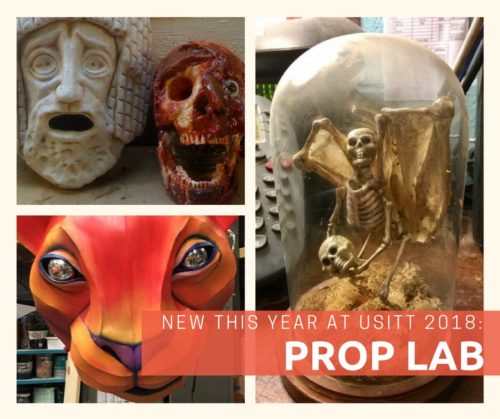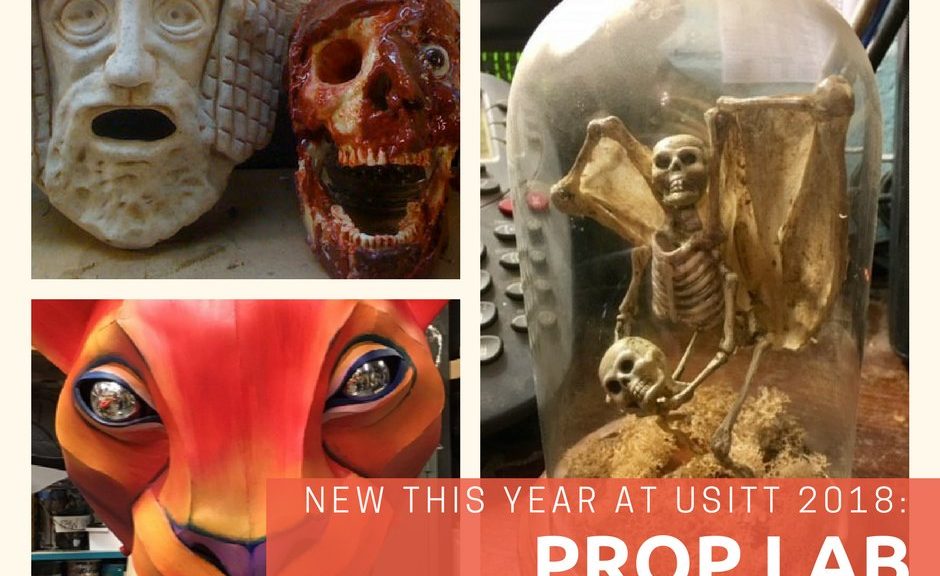At this year’s USITT Conference, we will be conducting the first ever Props Lab on the Stage Expo floor. Jay Duckworth, last year’s Early Career Honors speaker, has organized a dynamite team of props experts and myself to provide demonstrations and hands-on activities. A lot of these sessions have already filled up, so sign up quickly!
Thursday, March 15
11:00am-1:00pm
Welcoming Our Robot Overlords with Adam Daley, support by Karen Rabe
Overcoming fear of new technology and integrating it into our work with robots and quick Prototype. Hands-on with 3D printer, Rapid Prototyping 3D Printing/Robot Making for Props. Learn how to use this equipment, when you need to build a model at ¼†scale, idea exchange.
​1:00pm-2:30 pm
Welcoming Our Robot Overlords with Adam Daley, support by Karen Rabe
2:45pm-4:00 pm
Small Food Casting – “Berries” with Michelle Bisbee, support by Abbey Plankey.
Learn fast and effective casting process using Smooth-On OOMOO 30 Fast Set. Take home your very own freshly cast berries!
4:00pm-5:30pm
Small Food Casting – “Berries” with Michelle Bisbee, support by Abbey Plankey.
Friday, March 16
11:00am-1:00pm
Prop Gizmology Pew, Pew! with Thomas Fiocchi, support by Liz Hastings
How to design and execute cosplay weapon props without stinking up the place. Learn a seven-step process going from research, design, scaling, to engineering, constructing, and finishing your prop weaponry. We will discuss different methods, materials, and techniques to create world-class props in your budget and time frame. Woodworking, foam working, steel techniques, creative gizmology, it is all in this session!!!
1:00 pm-2:30 pm
Prop Gizmology Pew, Pew! with Thomas Fiocchi, support by Liz Hastings
2:45 pm-4:00 pm
Prop Gizmology Pew, Pew! with Thomas Fiocchi, support by Liz Hastings
4:00pm-5:30pm
Small Food Casting – “Berries” with Michelle Bisbee, support by Abbey Plankey.
Saturday, March 17
9:30am-11:00amÂ
Stage Combat and Safe Weapons with stage combat specialist Rick Sordelet, support by Jay Duckworth.
Safe stage combat and weaponry. Don’t end up a horrible statistic.
11:00am-12:30pm
Blood Pack Demos with stage combat expert Rick Sordelet, support by Jay Duckworth.
Tricks with blood bags with stage combat expert.
12:30pm-2:00pmÂ
Simple Pneumatics with Eric Hart, support by Jay Duckworth
Eric will introduce the principles of pneumatic prop design and demonstrate everything from simple puffs of dust to more complex movement using pneumatic cylinders and solenoid valves.
About the presenters
Adam Daley is a Mechanical Engineer turned Prop Master who has worked for companies ranging from Pacific Coast Theatre Festival to Utah Shakespeare Festival. In his free time, he mentors for FRC First Robotics and builds electric guitars.
Michelle Bisbee is an active member of S*P*A*M and a pillar of the props community.
Thomas Fiocchi has been the Props Technologist at Ohio University, training future props artisans, since 1997. He worked for a decade as a props artisan at the Shakespeare Theater in Washington DC, and at McCarter Theater in NJ. He operates Fiocchi Sword and Prop, doing custom stage combat weaponry and freelance props out of Athens Ohio.
Rick Sordelet is the top Fight Director in the country. He has 54 Broadway shows to his credit. He has staged all of Disney Theatrical productions, Lion King, Beauty and the Beast, Tarzan, Aida, and The Little Mermaid.
Eric Hart is the props master at Triad Stage and visiting professor at the University of North Carolina School of the Arts. He is the author of “The Prop Building Guidebook: for Theater, Film, and TV” and “The Prop Effects Guidebook.” He has built props for numerous theatres on and off Broadway and throughout the United States.


